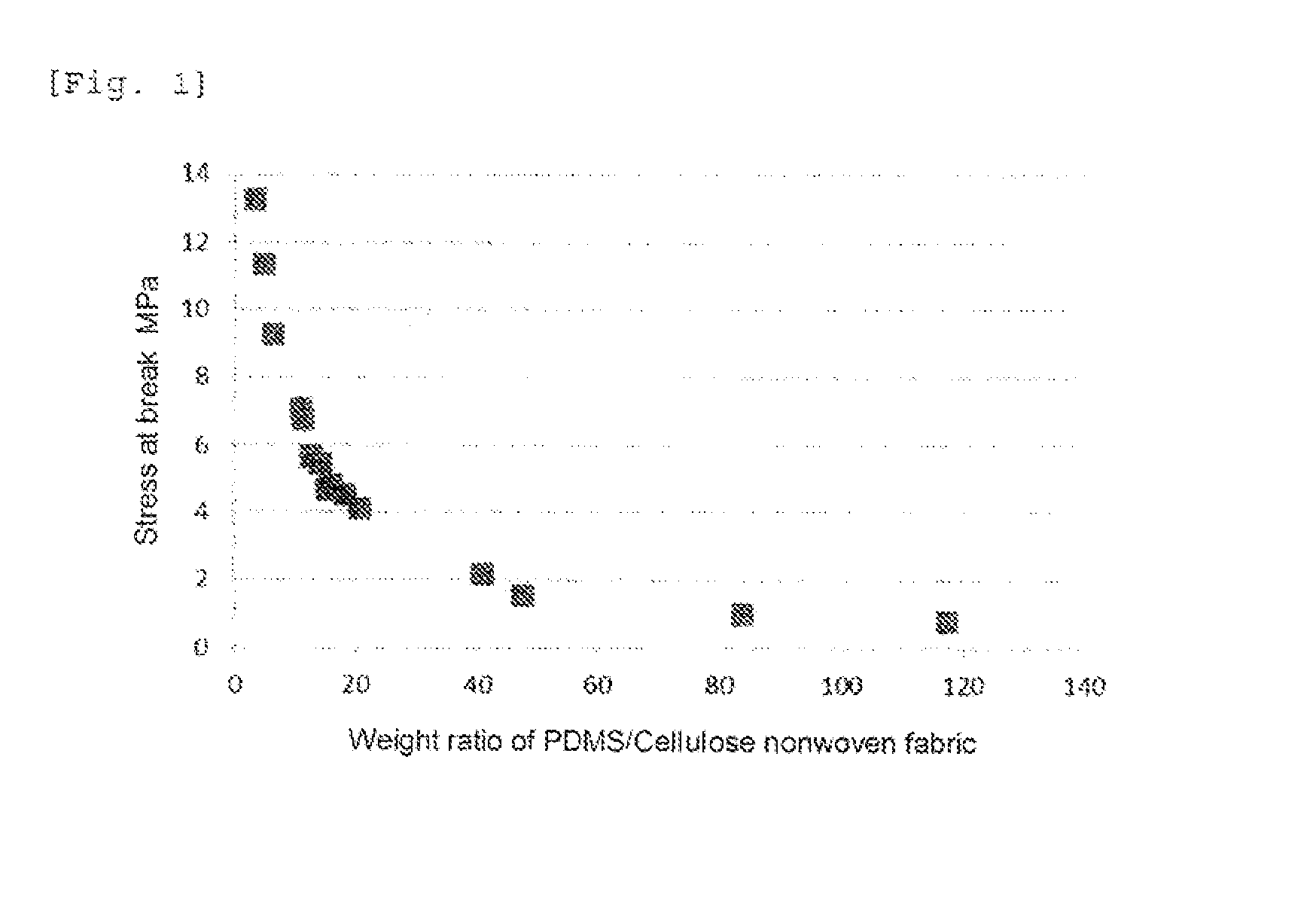Sheet-shaped mold, production method therefor, and application therefor
a sheet-shaped mold and production method technology, applied in the field of sheet-shaped molds, can solve the problems of low mechanical strength large mold production volume, and sometimes damaged (or broken) molds made of pdms cured products, and achieve the effects of low breakage rate, high strength and large area
- Summary
- Abstract
- Description
- Claims
- Application Information
AI Technical Summary
Benefits of technology
Problems solved by technology
Method used
Image
Examples
example 1
Preparation of Cellulose Fiber
[0153]A slurry (water dispersion) (100 liters) containing a NBKP pulp (manufactured by Marusumi Paper Co., Ltd., solid content about: 50% by weight, Kappa number: about 0.3) in a proportion of 1% by weight was prepared. Then the slurry was beat-treated 10 times by a disc refiner (“SUPERFIBRATER 400-TFS” manufactured by HASEGAWA REFRIGERATION, LTD.) at a clearance of 0.15 mm and a disc rotation frequency of 1750 rpm to give a refined product. The refined product was treated 20 times at a treatment pressure of 50 MPa by a first homogenizer (“15M8AT” manufactured by Gorlin) equipped with a usual non-crushing-type homovalve sheet (the inner diameter of downstream end of hollow cylindrical projection / the thickness of ring end face=1.9 / 1). The resulting product was further treated 20 times at a treatment pressure of 120 MPa by a second homogenizer (“PANDA2K” manufactured by Niro Soavi) equipped with a crushing-type homovalve sheet (the inner diameter of downs...
example 2
[0162]A cellulose nonwoven fabric having a basis weight of 10 g / m2 was produced by the same paper production as Example 1 except that a cellulose fiber (“CELISH KY-100G” manufactured by Daicel Corporation, average fiber diameter: 300 nm) was used as a fine cellulose fiber. The cellulose nonwoven fabric had an average thickness of 34 μm. A composite sheet and a sheet-shaped mold were produced in the same manner as Example 1 except that the cellulose nonwoven fabric was used. The composite sheet had an average thickness of 87 μm. The sheet-shaped mold weighed 0.026 g and had an average thickness of 114 μm.
example 3
[0163]A cellulose nonwoven fabric having a basis weight of 10 g / m2 was produced by the same paper production as Example 1 except that a refined product (average fiber diameter: 5 μm) obtained in the same manner as Example 1 (Preparation of cellulose fiber) was used as a fine cellulose fiber. The cellulose nonwoven fabric had an average thickness of 40 μm. A composite sheet and a sheet-shaped mold were produced in the same manner as Example 1 except that the cellulose nonwoven fabric was used. The composite sheet had an average thickness of 95 μm. The sheet-shaped mold weighed 0.032 g and had an average thickness of 145
PUM
 Login to View More
Login to View More Abstract
Description
Claims
Application Information
 Login to View More
Login to View More - R&D
- Intellectual Property
- Life Sciences
- Materials
- Tech Scout
- Unparalleled Data Quality
- Higher Quality Content
- 60% Fewer Hallucinations
Browse by: Latest US Patents, China's latest patents, Technical Efficacy Thesaurus, Application Domain, Technology Topic, Popular Technical Reports.
© 2025 PatSnap. All rights reserved.Legal|Privacy policy|Modern Slavery Act Transparency Statement|Sitemap|About US| Contact US: help@patsnap.com

